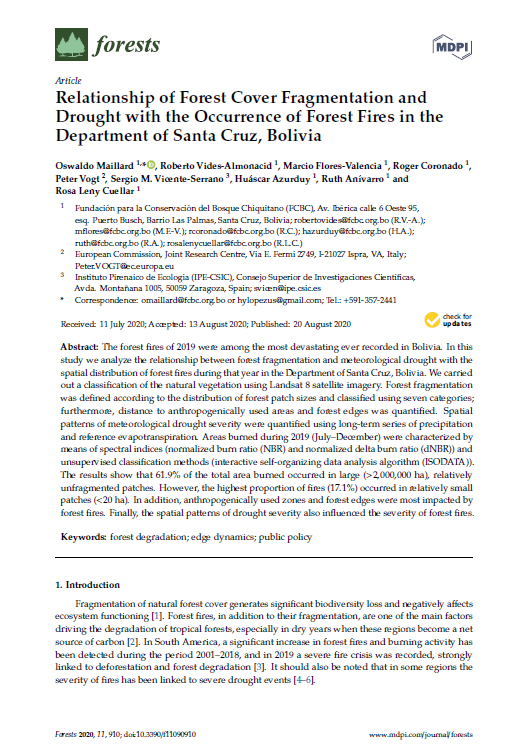Relationship of Forest Cover Fragmentation and
Drought with the Occurrence of Forest Fires in the Department of Santa Cruz, Bolivia

The forest fires of 2019 were among the most devastating ever recorded in Bolivia. In this study we analyze the relationship between forest fragmentation and meteorological drought with the spatial distribution of forest fires during that year in the Department of Santa Cruz, Bolivia. We carried out a classification of the natural vegetation using Landsat 8 satellite imagery. Forest fragmentation was defined according to the distribution of forest patch sizes and classified using seven categories; furthermore, distance to anthropogenically used areas and forest edges was quantified. Spatial patterns of meteorological drought severity were quantified using long-term series of precipitation and reference evapotranspiration. Areas burned during 2019 (July–December) were characterized by means of spectral indices (normalized burn ratio (NBR) and normalized delta burn ratio (dNBR)) and unsupervised classification methods (interactive self-organizing data analysis algorithm (ISODATA)).
The results show that 61.9% of the total area burned occurred in large (>2,000,000 ha), relatively unfragmented patches. However, the highest proportion of fires (17.1%) occurred in relatively small patches (<20 ha). In addition, anthropogenically used zones and forest edges were most impacted by forest fires. Finally, the spatial patterns of drought severity also influenced the severity of forest fir
